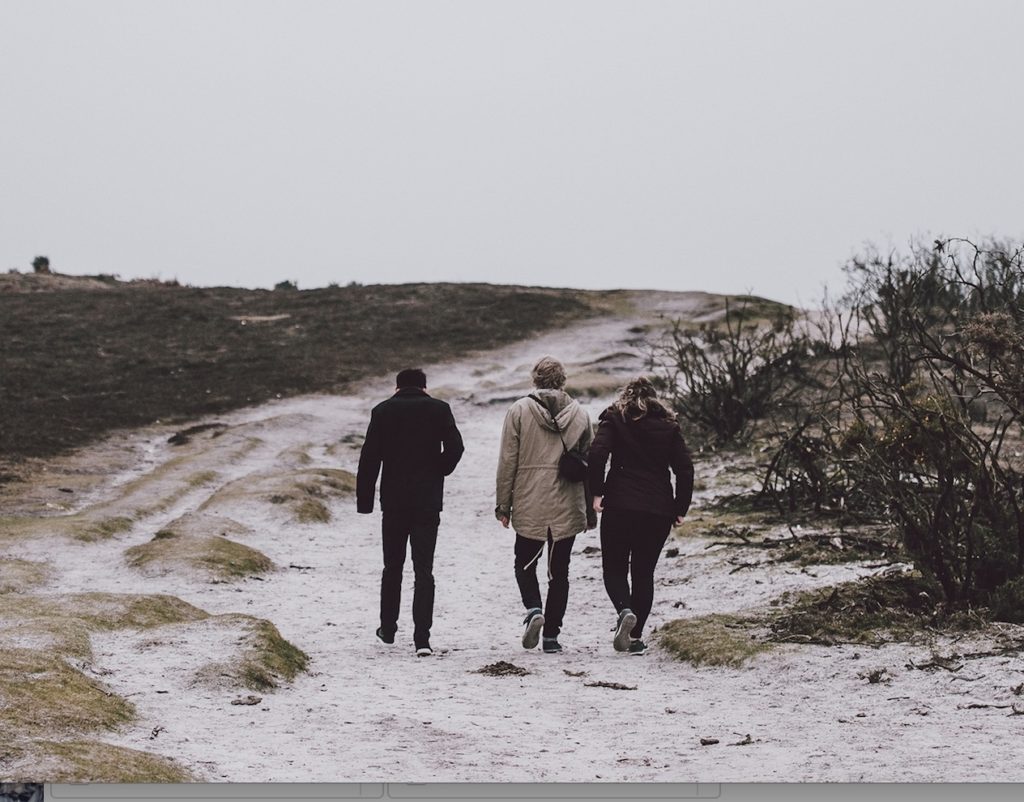
The Best Way to Recover From A Big Holiday Meal
Photo Credit: Annie Spratt, via Unsplash
Growing up, a dozen of us sat around the table for holiday meals, loading up on all the traditional rich foods. I recall the adults settling down on the couch after dessert.
A family stroll is a grand way to keep the conversation flowing
Not me. Like most kids, I was restless and needed to move. My siblings, cousins and I would immediately get out our bikes or our sleds if there was snow. We couldn’t wait to go outside.
The kids have the right idea. After a big meal, I suggest taking your family for a brisk walk.
Here’s why: Your blood glucose level rises after a meal, prompting a rise in your insulin and triglycerides.
Using your muscles will absorb some of that glucose and possibly dampen the insulin spike. That’s good for all of us, but especially important if you have heart disease. Even if you don’t have diabetes, the normal rise in insulin and triglycerides may last longer for you and then play a role in the development of atherosclerosis, according to a Japanese study published in November, 2015 in the Journal of Cardiology.
Also, for people with diabetes, the insulin spike that occurs after a meal may be a risk factor for heart disease.
Post-meal strolls will help to speed up your digestion more than an espresso or an alcoholic “digestif,” German researchers reported in March, 2008 in the Journal of Gastrointestinal and Liver Diseases.
Walk to Lose Weight
If you walk briskly and regularly after meals, you could drop pounds. Yasuyo Hijikata, a 60-year-old woman with a family history of Type 2 diabetes in Osaka, lost nearly seven pounds in a month, in an experiment described online in the International Journal of General Medicine in June, 2011. She walked briskly for a half hour as soon as possible after lunch and dinner every day. Another volunteer, a 67-year-old woman, did the same but strolled instead, and lost half as much. The pair diligently repeated the experiment, with the same results.
Don’t Wait to Walk
In many families, you’ll hear that it’s necessary to wait a half-hour—sometimes you’ll hear an hour– after a meal to swim or walk. Actually, you want to go within a half hour. Hijikata and her pal tried the experiment waiting an hour after eating—and didn’t lose weight. This is probably because blood sugar peaks within a half hour to an hour after a meal, and if you start using your muscles too late, you may miss the insulin trigger.
The theory behind the old rule: your body will steal blood from the digestive process to send it to your exercising muscles. The truth is that your body can handle both jobs nicely.
Don’t Overdo It
If you tend to get cramps after meals, you should of course do all you can to avoid discomfort.
There are some activities that are more likely to upset anyone’s digestion or aggravate acid reflux. Those include anything that turns your digestive system upside down, like touching your toes standing up or bending forward at the waist. You might steer clear of rigorous strength-training and big movements—jumping, bounding, or swinging.
A family stroll, on the other hand, is a grand way to keep the conversation flowing. Think of it as your chance to connect with a cousin who was sitting at the other end of the table, or carouse with a teen who would otherwise be plugged into his smart-phone. At Ornish Lifestyle Medicine, we see every day that social ties enhance health.
Don’t Kick Yourself
People eat more in large groups, and more with their families. They also eat more if they see more food options. As you no doubt guessed, holidays are not designed to help you eat less! After the holiday, don’t worry too much. Just focus on getting back to your healthful diet and exercise patterns as soon as you can. If you weren’t disciplined before the holidays, the New Year is a perfect time to start. (See Ornish Living, The Key to Successful and Sustainable New Year’s Resolutions) Any excuse to do the right thing is great by me.
What can you do to get your family on a stroll after eating?








